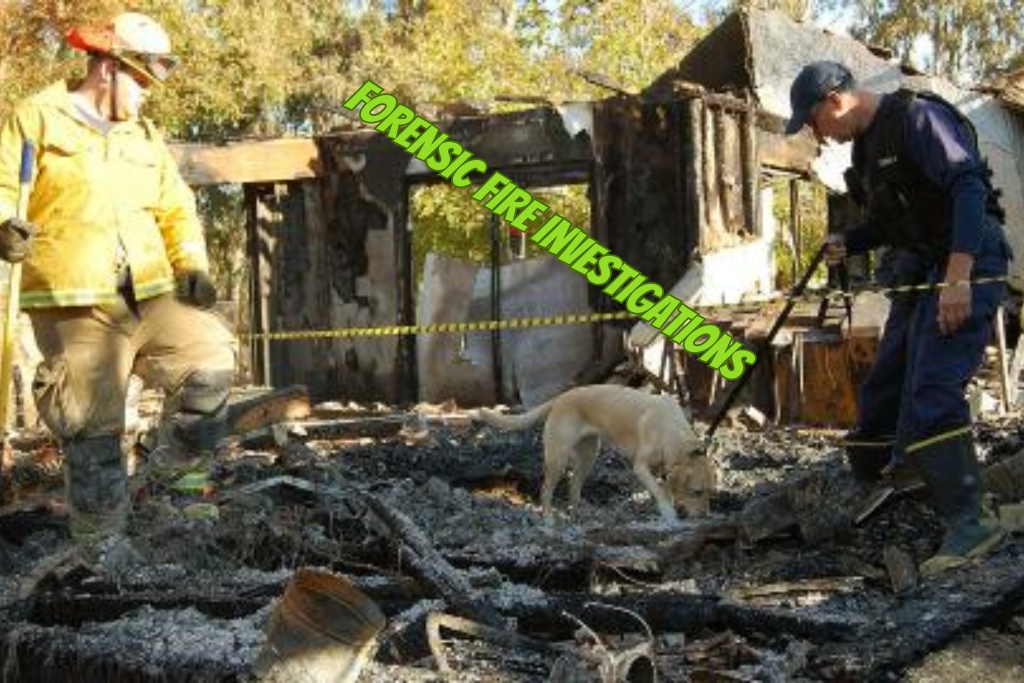In the aftermath of a fire, amidst the charred remains and smoke-laden air, lies a narrative waiting to be uncovered through thorough fire investigations. Forensic fire investigations represent a critical junction of science and sleuthing, where investigators piece together evidence to narrate the story of how and why a fire occurred. This journey from ashes to answers not only requires a keen understanding of fire behavior but also an interdisciplinary approach involving chemistry, physics, and engineering.
The Role of Forensic Fire Science
Forensic fire science stands at the forefront of unraveling the mysteries behind fires and explosions. Through meticulous analysis and investigative techniques, experts in this field aim to pinpoint the origin and cause of a fire.
Delving into Fire Dynamics
At the heart of forensic fire investigations is the study of fire dynamics. Investigators analyze burn patterns, smoke deposits, and the distribution of debris to understand the fire’s behavior. This information is crucial in reconstructing the sequence of events leading up to the fire. Fun fact: The color and shape of smoke can often give away crucial clues about the materials involved in a fire.
HVAC/R Distributors: Unsung Heroes in Fire Prevention
An often-overlooked aspect of fire prevention involves the role of HVAC/R (Heating, Ventilation, Air Conditioning/Refrigeration) distributors. These professionals are instrumental in ensuring that systems are not only efficient but also safe from potential fire hazards through the adoption of innovative HVACR solutions.
A Critical Checkpoint
HVAC/R systems, if not properly installed and maintained, can become inadvertent ignition sources. Distributors play a crucial role in preventing fires by providing equipment that meets safety standards and by educating installers and consumers on proper maintenance practices. Ensuring that these systems are free from defects and installed correctly is a vital step in mitigating fire risks in both residential and commercial settings.
The Science of Tracing Fire Origins
Identifying the point of origin is a critical step in fire investigations. This process involves a combination of observational skills, scientific knowledge, and often, a bit of detective work.
The Intersection of Chemistry and Crime Scene Investigation
Investigators use chemical analysis to detect residues and substances that could have contributed to the fire. Laboratory tests can reveal the presence of accelerants, such as gasoline or alcohol, which may indicate arson. The ability to detect these substances amidst the complex matrix of fire debris is a testament to the advancements in forensic technology.
Post-Fire Cleaning: A Necessary Step Towards Restoration
After the investigation concludes and the origin and cause of the fire are determined, the focus shifts towards cleaning and restoration. This phase is crucial for the health and safety of occupants returning to the affected area.
Beyond the Surface: Cleaning for Health and Safety
Post-fire cleaning involves more than just aesthetics; it’s about ensuring the environment is free from toxic residues and harmful particulates. Professionals, including those from a highly-rated house cleaning service, use specialized equipment and techniques to remove soot, ash, and smoke odors, restoring the air quality and making the space safe for habitation again. This process not only helps in salvaging belongings but also plays a significant role in the emotional recovery of those affected.
Lighting the Way Forward
Forensic fire investigations illuminate the path from devastation to understanding, providing answers in the wake of loss. The integration of science in this field has revolutionized our ability to analyze fires, leading to more accurate conclusions and, ultimately, safer communities. Moreover, the proactive measures taken by HVAC/R distributors in preventing fires and the thorough cleaning processes following a fire are testament to the multi-faceted approach required in managing fire risks. From the ashes of tragedy, forensic fire science offers a beacon of hope and resolution, paving the way for prevention, recovery, and justice.

